Emails are pivotal in businesses and every organization’s workspace for communication. Mailbutler’s research shows that a whopping 347.3 billion emails are shared per day. Microsoft says the huge influx of emails has outpaced humans’ ability to organize and categorize them effectively.
At the same time, Slack has emerged as one of the top tools for transparent and organized internal communication. Employees these days like to work from Slack, and bridging the gap between email and Slack has emerged as a common challenge in organizations. This guide dives into the most common questions around Email-Slack integration. We cover:
- Use Cases and Advantages of Integrating Email and Slack
- Explore Native Slack Email integrations using Channel Emails, Gmail/Outlook Plugins etc.
- Third Party Slack Email integrations using Ticketing tools and Slack-Email specialists like Front and ClearFeed.
and other miscellaneous related topics.
Note: If you hit this blog trying to find a way to reach Slack Support via Email - check out this Guide on how to contact Slack Support instead!
5 Key Advantages of Integrating Email to Slack
Here are the most important advantages of integrating Email and Slack
- A unified approach to tackling all communication: Slack enables you to integrate multiple communication channels into a single interface. Slack’s extensive app integrations allow updates from common enterprise tools like Jira, Zendesk, Salesforce, and others to be directly available within Slack. Email is one of the most prolific sources of communication, and bringing email into Slack means one never has to leave it.
- An alternative to Email Groups: Slack's channels enable users to organize conversations by topics like features or billing and client categories such as premium or SMBs, streamlining the delegation of queries to appropriate teams, particularly benefiting customer service communication. Integrating Slack with email expands the conversation to include external participants, enhances internal group communications, and becomes a preferred alternative to traditional email groups within organizations.
- Shared inbox: According to a survey by Hiver, employees tend to ignore 40% of the emails they receive. This is particularly problematic when it comes to receiving customer communication, where emails need a timely response. Slack-email integration resolves this issue to its core with its functionality to organize and track external emails in common Slack Channels. The presence of multiple participants in such channels means all customer emails can be seen by a broader team, and anyone available can respond to them.
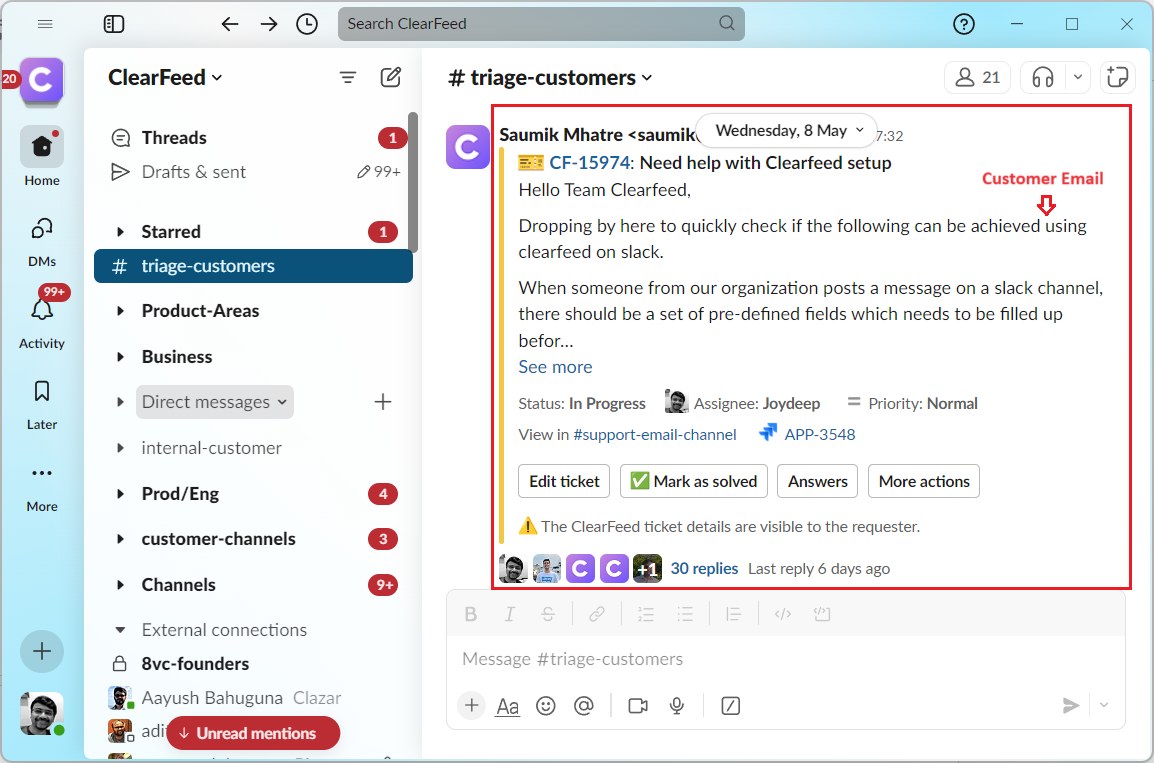
- Automated workflows: One of the key advantages of bringing emails into Slack is the ability to leverage Slack’s in-built workflows. These automations can not only take actions inside Slack (like posting messages in specific channels) but can also be designed to perform various actions, such as:
- Posting messages in specific channels with email details
- Assigning tasks or creating issues in external tools like Jira based on email content
- Sending notifications to relevant team members
- Archiving or forwarding emails to other channels or users

- Reduced copy-pasting: Consistently switching between multiple apps and email tools causes digital overload and can be overwhelming for employees. This reduces productivity and consumes time unnecessarily. By syncing email with Slack, we can streamline communication and manage projects within a single workspace. Therefore, Slack-mail integration ultimately boosts productivity and enhances user experience.
Quick Comparison of Slack-Email Integration Techniques
There are at least 4 distinct ways to connect Slack and Email. Here's a quick comparison table across these methods:
Slack Email Integration: How To Integrate Email With Native Functionality?
There are several different ways of integrating Email and Slack using functionality bundled with your Slack subscription. These include:
- Creating an email address for a channel and sending emails to it.
- Forwarding emails to Slackbot and receiving it in your Slack.
- Using Slack plugin for Gmail and Outlook to send Emails to Slack easily.
In the following sections we go over these techniques in greater detail.
Email to Slack: How to Send Emails to a Channel?
Slack allows users to send emails to Slack through a unique email address generated within the app for a channel or a group. This feature is available only with a paid subscription to Slack. The steps to create the email address are as follows:
- Go to the Slack desktop app. Open the DM group or channel where you need to direct the emails.
- Go to the conversation header. Click on the channel name if you wish to send an email to the channel. Click on member name(s) if the email is supposed to be sent in a DM.
- Click on the Integrations tab.
- Then, click on Send Emails to this channel. In the case of DM, click on Send emails to this conversation.

- [OPTIONAL STEP] Click on Customize email appearance, if you want to upload an image or emoji to be visible with the emails posted on Slack.
- Select Get email address.
- If you like to create an email for the channel, click on Copy and then Share email address. It will post a message to the channel, and you can add any details that you would like to share with the channel members.
Sending emails to channels is vital for sending email alerts to Slack for compliance failures or system notifications. Many software do not have a direct Slack integration - but send emails. Forwarding those emails to a channel can create shared visibility to alerts using Slack.
Points to Remember:
- All the admins and owners of the workspace can manage the ability of other channel members to create email addresses.
- In the case of multiple organizations working together on Slack, any organization can generate this email for a channel. The email would be visible to all members of the channel.
- This feature is available to Slack workspaces on a paid subscription (of any level).
How To Forward Email to Slack (Gmail & Outlook)?
You can forward emails from your Inbox (in Gmail or Outlook) to Slack using Slackbot. You can do this without a subscription plan for Slack? Follow the steps below and use Slack like a pro.
- Go to your Slack desktop and Click on your profile picture.
- Click on Preferences and go to Messages & Media.
- Navigate down till you reach the Bring emails into Slack option.
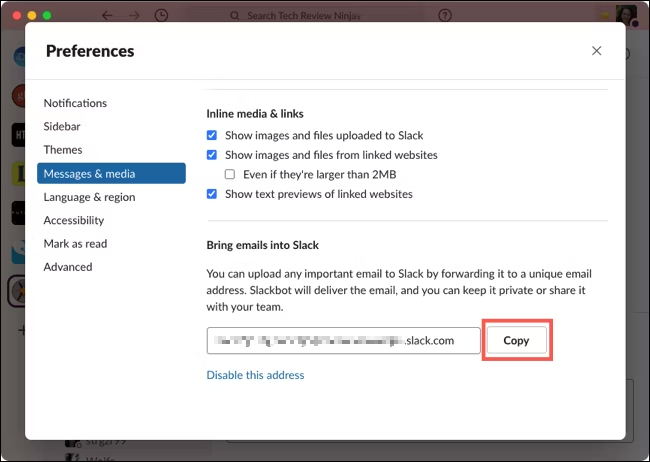
- Select Get a forwarding address. Your email address will be generated.
- Copy the email address and use it to forward your emails to Slack.
Points to Remember:
- You must have the incoming emails option enabled for your organization or channel.
- You might not want to opt for this method if you deal with a huge influx of emails.
How To Connect and Integrate Gmail to Slack Using Add-ons?
The following steps detail how to use the Slack for Gmail app to connect Slack to Gmail directly:
- Install Slack for Gmail from the Google Workspace.
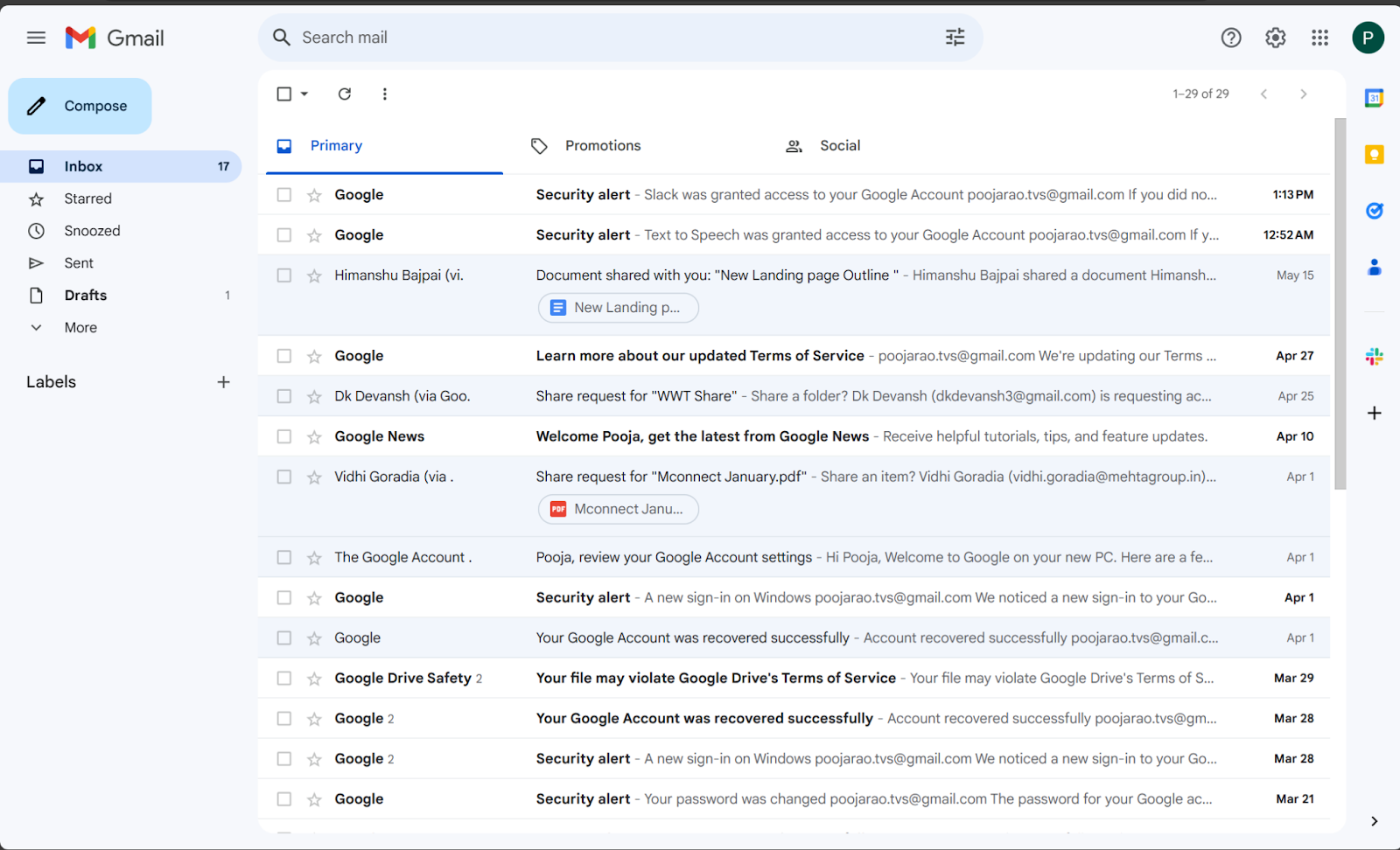
- Once the installation is done, the Slack icon will appear in the right-hand sidebar of your Gmail.
- Select an email and Connect to Slack.

Note: Make sure you have access to connect Slack for Gmail add-on to your organization’s workspace.
- Once you connect to Slack, click the Slack icon and select Search Channels and people. Click on the workspace and select the channel or person you want to share the email with. Press Enter.
- Select Send to [name]. Choose the View option and Voila! You have successfully sent your email to Slack.
Microsoft Outlook Slack Integration: How to Connect?
- Go for Slack for Outlook add-on from Microsoft AppSource. Select the Get it now option.

- Add your Outlook account and sign in.

- Go to the Slack icon in the toolbar and click on Connect to Slack.
- Select an email. Click on the Slack icon and search for the name of the Channel or member to which you wish to send the email. Select Send to Slack, and you will see the email in the Slack conversation. If you are working in a browser, select the three-dot icon and click on Send to Slack.
How To Setup Email Forwarding From A Company Domain to Slack?
We have seen in earlier sections how to get an Email in Slack that can land in personal notifications or in a Slack Channel. But what if we have a company email address that we want to forward to Slack. This is easily done through a setup in your Email provider. Example.
- Get hold of the Email address for a Channel from Slack as explained earlier.
- In Gmail, add that address under Forwarding & POP/IMAP and confirm via the Slack pin code.
- Alternately, in GSuite, if the email address is for a Google Group - add the Slack provided email as a member of the group - and make the Group open to Emails by "Anyone on the Internet"
- In Outlook, build a “forward to people or public group” rule using the same address.
- Optionally use Email filters so only specific Emails reach Slack to prevent noise
How To Reply to Emails From Slack?
Conventional methods for integrating Slack and Email do not allow replying to Email from Slack. Third party vendors like Mailclark, Front, Zapier or ClearFeed may be able to help with this. ClearFeed, for example, enables a bidirectional sync between Email and Slack and allows users to receive emails and respond to them - all from Slack:
- Users create an email id to receive emails on.
- Emails on this id are setup for forwarding to an email id created in their ClearFeed account.
- ClearFeed sends any incoming emails to a configured channel and triage-channel in the user's Slack workspace.
- Users can read and reply to such emails directly from Slack. Posting a reply is as simple as sending a Slack message!
Readers interested in learning more can check out detailed documentation on Slack-Email integration.
Email Parser Slack Integration: Trigger Actions (Jira, etc.)
Emails are frequently used to bring alerts into Slack - and Jira (or ClickUp/Linear/GitHub) issue creation is a common followup requirement. There are a few ways to trigger the conversion of Emails to Jiras:
- Using Slack automations that can be triggered by Emojis (for example) applied to the Email messages - and that then invoke Jira creation. Note that Slack workflows cannot be triggered on every message.
- Alternatively, using a solution like ClearFeed - one can trigger Jira creation on every message, or on a subset of messages using AI classification.
Integrate Email With Slack Using Ticketing Software
All support platforms, like Zendesk, Freshdesk, etc., allow customers to raise tickets using email. They also have integrations with Slack of varying capabilities. Thus, one straightforward way of receiving and responding to emails in Slack is to use a ticketing software that integrates well with Slack.
As an example, with Zendesk one can:
- Receive emails from customers on an email-id integrated with Zendesk
- Zendesk converts those emails to tickets
- Users can setup Triggers to generate Slack notifications when such tickets are created
However, replying to emails from Slack for such platforms is not seamless. Users have to make multiple clicks to convert a Slack reply into an email. This is where software like ClearFeed can be very useful.
Related Read: How to Choose a Right Ticketing Software for Your Business
How to Unify Email and Slack Communications using Specialized Integrations
As we have seen, while the native Slack-Email integration provides some good capabilities to bring these systems together, but it lacks some necessary functionality (like being able to reply to Emails from Slack). Advanced Slack Email Integrations like ClearFeed and MailClark can provide this and many more features to manage Emails from Slack. Here are some advanced features that such third party solutions provide:
1. Receive and Send Emails & Attachments in Slack
Clearfeed (for example) enables seamless flow of information between Slack and email tickets by synchronizing incoming emails, replies, and attachments in real-time. Replying to an email from Slack is as simple as posting a Slack message. The same is sent back to the email sender, as well as any additional people copied in the email.

2. Private Collaboration on Emails in Slack Triage Channels
When responding to customer emails - internal collaboration is a must-have. ClearFeed’s Slack Triage Channel enables the teams to collaborate using private replies on email threads. Features like Triage Channels and Email Status, Assignee and Priority make Slack a perfect place to manage a shared Email Inbox.

3. Track status of Email queries and replies
Systems like ClearFeed, MailClark and Front converts every incoming email into a trackable object. Users can see and update the status from the Triage Channel (or a web application). It also generates reminders on pending replies - making sure teams are responsive to customers, employees or partners.
4. AI Services: Email Slack Integration Triggers & Deflection
Adding a GPT-powered virtual assistant in ClearFeed’s Email-Slack Integration suggests answers to the team on common queries. The suggested answer can be made visible only to the internal team and, hence, ultimately Agents have the authority to decide whether or not to use it. It reduces the response time and ensures that teams don’t have to work on issues that don’t require human intervention. The Answer can also be posted to the email sender directly.
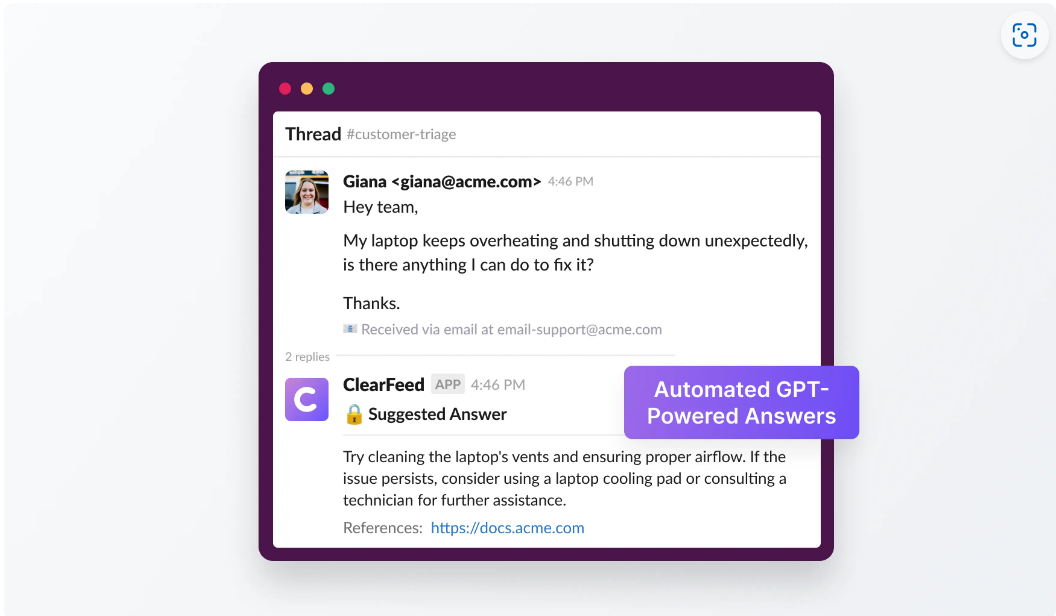
5. Combine Slack & Email with Jira, ClickUp, Asana, Linear
Support teams often want to convert some incoming Emails into tasks in systems like Jira, ClickUp, Asana, Linear and other project management systems. This can be easily done using solutions like ClearFeed - which will not only allow seamless replies to Email from Slack, but also make it possible to convert Slack threads to Jira tasks (for example) and link them, thereby establishing a bi-directional sync between the created Jira and the Slack thread. Critical updates from Jira now flow back into the thread (as private notes) and any progress can be communicated to customers.
6. Advanced Analytics and Interactive Web App Dashboard
Monitoring the metrics is a crucial feature of any advanced Email-Slack integration. With comprehensive analysis, you can identify SLA breaches, review and respond to requests across Slack channels and email, and monitor the response time. It ensures efficient and effective management.
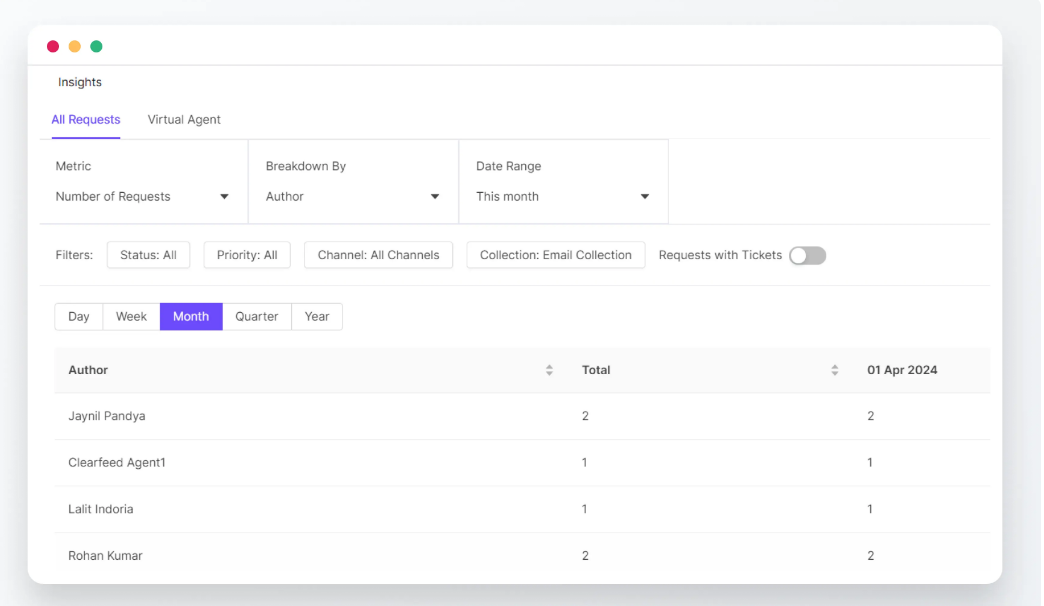
Want to see ClearFeed’s integration in action? Contact our team at support@clearfeed.ai and book a free demo with our customer support specialist here.
FAQs
1. Can Slack Be Used for Email?
Slack can be used to receive Email into channels or to a personal Inbox. However Slack cannot be used, by itself, to reply to Emails or send outgoing . Or to perform actions like archiving emails or labelling them. Slack apps like ClearFeed or MailClark can be used to reply to emails from Slack, setup shared inboxes in Slack, categorize Emails or mark them as closed.
2. Can Slack Be Integrated With Gmail and Outlook?
Yes, Slack can be integrated with both Gmail and Outlook, allowing users to enhance their productivity by connecting their email communications directly with their Slack workspace.
- For Gmail, the Slack for Gmail™ integration lets you forward emails into Slack channels or direct messages (DMs) right from your Gmail inbox. This integration simplifies sharing email content and attachments with team members in Slack without having to leave Gmail.
- As for Outlook, similarly, Slack can be integrated with Outlook. You can use the Outlook Calendar and Microsoft Outlook for Slack apps to send emails, manage your calendar, and join meetings directly from Slack. This integration also supports forwarding emails from Outlook to Slack, enabling seamless communication and collaboration without switching between applications.
2. How To Send Emails From Slack or Forward Messages?
There is no native ability in Slack to send Emails. For users who want to send emails to create Support Tickets via email - they can use their Ticketing software's native Slack app (or third party software like ClearFeed) to create tickets from Slack. Users who want to convert a message to an emai may want to consider Zapier to convert Slack messages to Email.
3. Can Slack Notify My Inbox When I’m Away?
Yes - enable email notifications under Preferences → Notifications from your Slack Desktop application.

4. How Many Unique Channel Email Addresses Can a Workspace Create?
Thirty in total on paid plans.
5. Does Replying in Slack Update the Email Thread?
If you reply to an Email posted by Slack bot in a Channel - the reply does not go back to the Email. Its only posted in Slack. To establish a genuine two-way sync with Email - you need a solution like ClearFeed with a bi-directional Slack-Email integration.
6. What Is “Slack Email”?
“Slack Email” can mean three things:
- A unique address created by the Slack Email app that posts messages to one channel.
- The Slack for Gmail or Outlook add-on that lets users push individual emails into any conversation.
- A two-way help-desk layer (e.g., ClearFeed) that syncs entire threads so replying in Slack sends mail back to the sender.




















